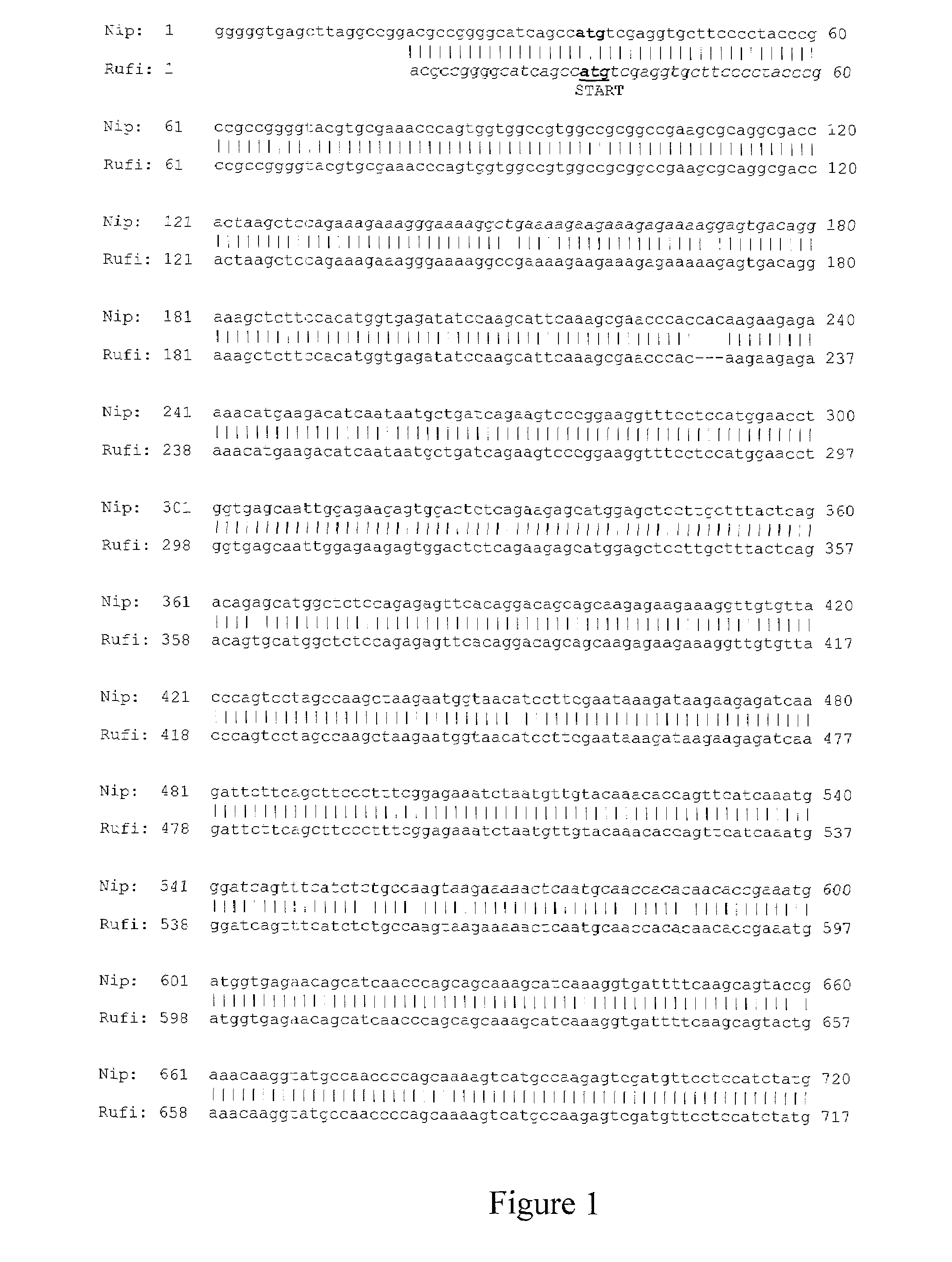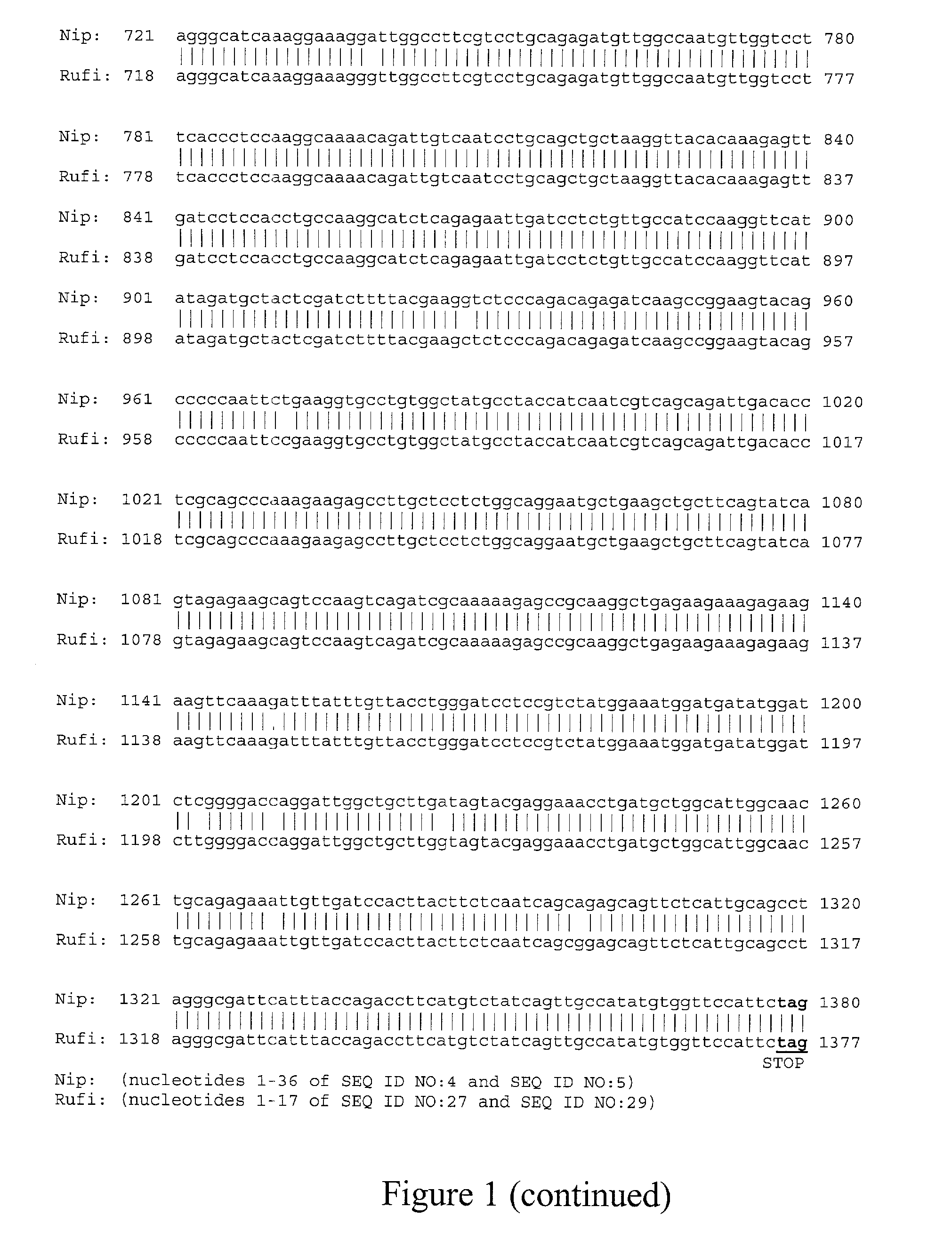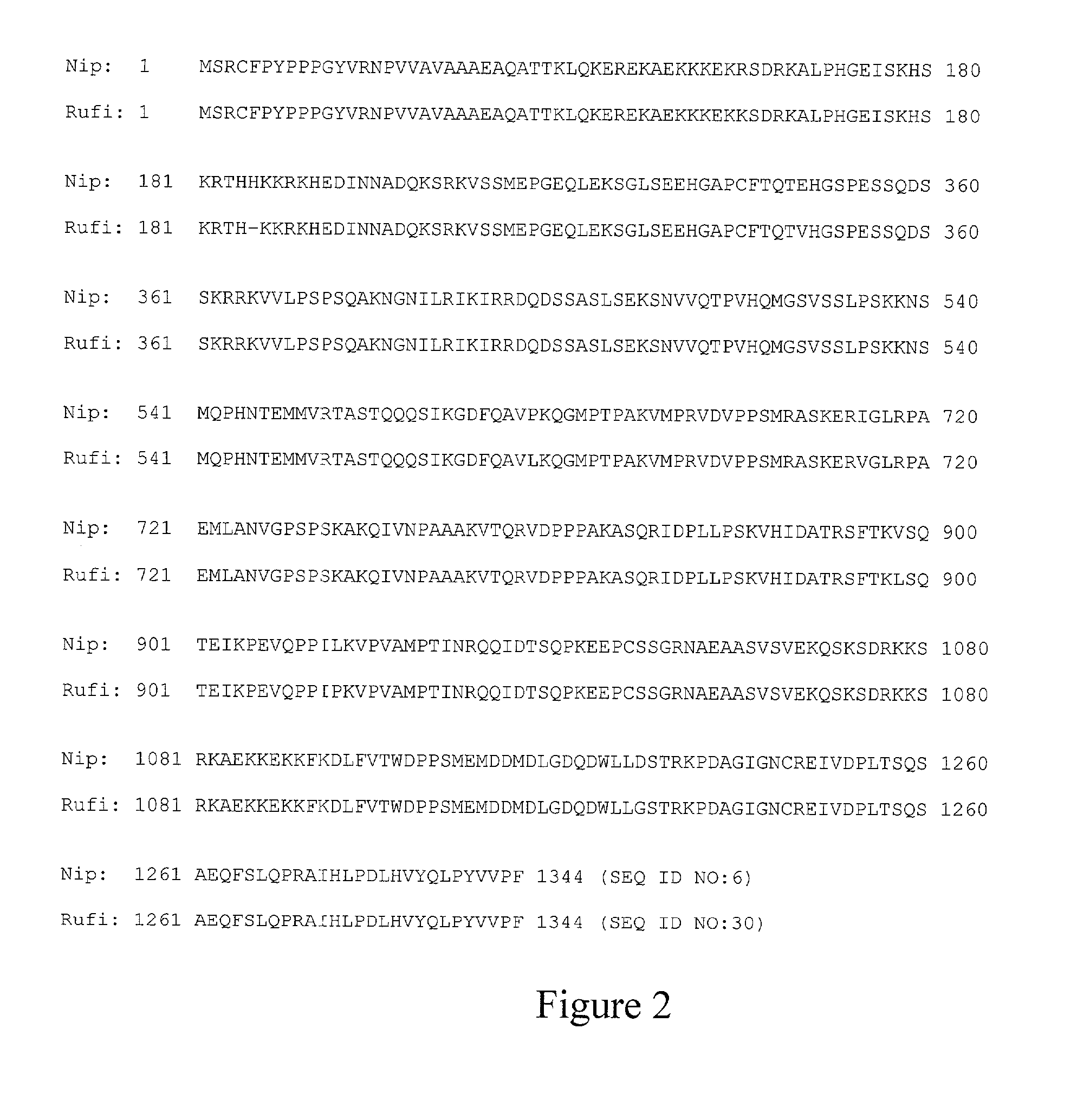EG307 polynucleotides and uses thereof
a technology of eg307 and polynucleotides, applied in the field of eg307 polynucleotides, can solve the problems of difficult identification of such polynucleotides among the tens of thousands of genes in the plant and animal genom
- Summary
- Abstract
- Description
- Claims
- Application Information
AI Technical Summary
Benefits of technology
Problems solved by technology
Method used
Image
Examples
example 1
cDNA Library Construction
[0284]A domesticated plant or animal cDNA library is constructed using an appropriate tissue from the plant or animal. A person of ordinary skill in the art would know the appropriate tissue or tissues to analyze according to the trait of interest. Alternately, the whole organism may be used. For example, 1 day old plant seedlings are known to express most of the plant's genes.
[0285]Total RNA is extracted from the tissue (RNeasy kit, Quiagen; RNAse-free Rapid Total RNA kit, 5 Prime-3 Prime, Inc., or any similar and suitable product) and the integrity and purity of the RNA are determined according to conventional molecular cloning methods. Poly A+ RNA is isolated (Mini-Oligo(dT) Cellulose Spin Columns, 5 Prime-3 Prime, Inc., or any similar and suitable product) and used as template for the reverse-transcription of cDNA with oligo (dT) as a primer. The synthesized cDNA is treated and modified for cloning using commercially available kits. Recombinants are then...
example 2
[0286]Randomly selected ancestor cDNA clones from the cDNA library are sequenced using an automated sequencer, such as an ABI 377 or MegaBACE 1000 or any similar and suitable product. Commonly used primers on the cloning vector such as the M13 Universal and Reverse primers are used to carry out the sequencing. For inserts that are not completely sequenced by end sequencing, dye-labeled terminators or custom primers can be used to fill in remaining gaps.
[0287]The detected sequence differences are initially checked for accuracy, for example by finding the points where there are differences between the domesticated and ancestor sequences; checking the sequence fluorogram (chromatogram) to determine if the bases that appear unique to the domesticated organism correspond to strong, clear signals specific for the called base; checking the domesticated organism's hits to see if there is more than one sequence that corresponds to a sequence change; and other methods known...
example 3
Molecular Evolution Analysis
[0288]The domesticated plant or animal and wild ancestor sequences under comparison are subjected to KA / KS analysis. In this analysis, publicly or commercially available computer programs, such as Li 93 and INA, are used to determine the number of non-synonymous changes per site (KA) divided by the number of synonymous changes per site (KS) for each sequence under study as described above. Full-length coding regions or partial segments of a coding region can be used. The higher the KA / KS ratio, the more likely that a sequence has undergone adaptive evolution. Statistical significance of KA / KS values is determined using established statistic methods and available programs such as the t-test.
[0289]To further lend support to the significance of a high KA / KS ratio, the domesticated sequence under study can be compared to other evolutionarily proximate species. These comparisons allow further discrimination as to whether the adaptive evolutionary changes are u...
PUM
| Property | Measurement | Unit |
|---|---|---|
| Fraction | aaaaa | aaaaa |
| Fraction | aaaaa | aaaaa |
| Fraction | aaaaa | aaaaa |
Abstract
Description
Claims
Application Information
 Login to View More
Login to View More - R&D
- Intellectual Property
- Life Sciences
- Materials
- Tech Scout
- Unparalleled Data Quality
- Higher Quality Content
- 60% Fewer Hallucinations
Browse by: Latest US Patents, China's latest patents, Technical Efficacy Thesaurus, Application Domain, Technology Topic, Popular Technical Reports.
© 2025 PatSnap. All rights reserved.Legal|Privacy policy|Modern Slavery Act Transparency Statement|Sitemap|About US| Contact US: help@patsnap.com



